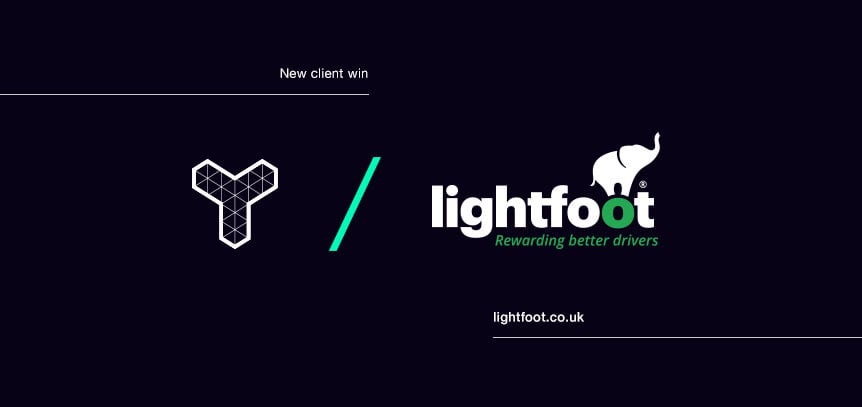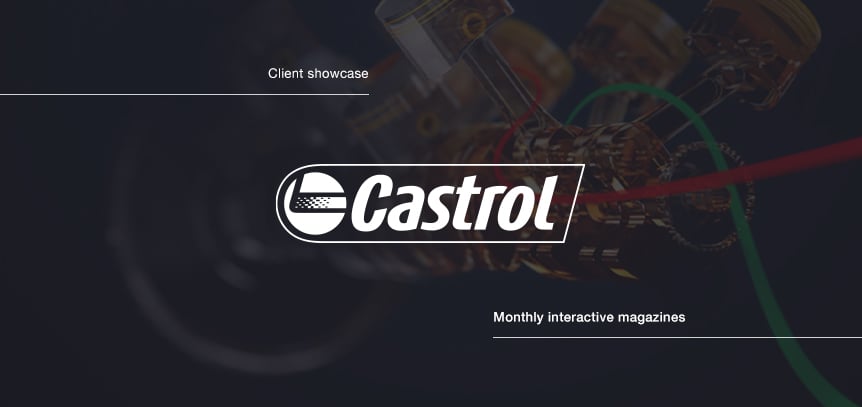
How a great content marketing agency will onboard customers to nail success
Here’s content marketing secret number 2… We hope you’ve laced up your cleats, because in this part we’ll be nailing the kick-off process with your content marketing agency.
In part one of Stripped Bare, we discussed the makings of a whirlwind client-agency romance, and how you can be sure that you’ve found “the one”. In this edition, we’ll be giving you the lowdown on how to conduct yourself in order to get the best out of onboarding processes.
So how does a great relationship between client and agency teams start? Answer: by recognizing that you are a team. Trust us, this part is essential (so avoid working with any agency that skates over it).
Putting content in view of your suspects and prospects is an awesome responsibility. And most of the time that responsibility is shared between departments. After all, it’s your combined beliefs, actions, and outcomes that make you the collective custodians of your brand. In fact, they are your brand.

Putting people ahead of the CONTENT MARKETING project
So before anyone drills down into defining objectives and planning campaigns, we nail down a few roles and reach an agreement on them. Embracing teamwork from the start, by working out who matters.
The onboarding process starts by naming four key functions on the client side: the project sponsor, project lead, thought leaders, and the content committee. Let’s look at each in turn.
The project sponsor: your strategic lead
Who’s holding the money? It’s the project sponsor — the person whose KPIs are being delivered by working on the project. Often hailing from the C-Suite, and usually a marketing bod, but not always. Today’s content marketing agency can engage in educating an audience or attracting new recruits as much as selling products or services — so the CEO, CPO, or CTO may be named as sponsor as often as the head of sales or marketing director.
The sponsor is the ultimate decision-maker on your side. But he or she may not be involved day-to-day. Instead, by bookending the process — setting goals and evaluating results — they act as supreme judge and jury while others execute.
No project can succeed without a willing sponsor, so spend some time thinking about who could take the role within your organization. It has to be someone who looks beyond departmental goals, and instead at broader strategic ones. Your sponsor needs to think about how the project affects your competitive position as a whole.
The project lead (or manager): point-person for the day-to-day
While the project sponsor may decide ultimate budget and goals, the project lead takes care of the tactical stuff. He or she is the point of contact for the marketing agency team, the one people turn to for approvals and decisions when needed.
There’s also work to be done involving deadlines and budgets. Top content marketing agencies work hard to stay on top of time and cost restraints. Having the same mindset as your agency is a common denominator in most great client-agency partnerships. Your agency will need sign-offs, box-ticks, and yes/no decisions made at regular intervals. If you’re on time, the whole project will stay on time — and you can get your hands on those sweet, sweet returns on time too.
Just as your agency will assign a project lead on their side, you’ll be expected to name a project lead on your side. If you’re reading this, surprise surprise: it’s could be you.

Thought leaders: putting words in your mouth
With sponsor and lead named, then come the thought leaders — the individuals who’ll put their names to your content marketing activities. Often there’ll be three or four, but sometimes there’s only one, and sometimes it’s the same person as the sponsor or lead. All of which is just fine.
The main thing to think about? That the name is a good match for the content. In other words, that the ideas and facts in the campaign piece fairly represent the skills and experience of the thought leader, and will build his or her reputation in their space as well as market your organization to its audience.
This ensures that while each leader may never write an article off their own back (but they can if they wish), the content will be theirs in spirit. So take a moment to think about whose knowledge your organization is proud of and would like to highlight. It’s a great way to bring their expertise to a broader audience.
The content MARKETING committee: let’s talk shop
Last but not least comes the content committee. These people aren’t the bottom of the pyramid, they’re the foundations holding it up. Their knowledge and experience is the lifeblood of successful content marketing campaigns. Their ideas give gravitas to the creative work that ends up in inboxes and bookmarked lists — it’s the difference between filler word count and articles that get read and acted on.
That’s another trait of a great client-agency relationship — nobody claims to know everything. Information gathering is a vital part of the process. Often we’ll ask for an interview… or two… or more. The best writers are the ones that are willing to sweat.
So who’s on your content team? It varies. Product experts, brand specialists, salespeople. Maybe customer service to give us a voice from the coalface, and account management to give us the customer landscape. Maybe even a marketing head or two! Whoever they are, they’re the names you’d hear if you asked around for “who knows about this?”
The strategic bit
These roles aren’t arbitrary — they have a sound basis in management lore. It’s a feature of high-performing teams that everyone knows what they’re doing, what’s expected of them, and what everyone else is responsible for. For smart thinking on teams, we recommend the McKinsey Quarterly or Harvard Business Review, and pretty much anything by Peter Drucker.
STARTING THE PROJECT: the kick-off
With the people decided, the fun part starts (well, we think it’s fun, but maybe we’re just squares). The best content marketing agencies will arrange a series of sessions throughout the onboarding process. The idea of these is to bring the client and agency closer to facilitate fast-paced, reactive campaign processes.
You want to be able to get from setup to “go-live” in 12 weeks.
The content marketing methodology
- Listen: Assess current marketplace activity, get to know the communications channels, industry trends, personas and challenges specific to your sector.
- Create: Align insights and actions to establish a strategic calendar of content and activity.
- Engage: Interact with prospects across channels, including email, social, onsite, and paid.
- Nurture: Convert contacts to sales prospects using lead scoring and marketing automation.
- Analyse: Regularly evaluate and optimize your performance, and strategically set goals as you go with data-driven reporting and analysis.

So, what are the onboarding sessions for a content marketing program?
- Kick-off
- Targeting
- Strategy
- Enablement
The session: Kick-off
Phase: Operational
Who’s involved: In short, everyone. It’s important the right expectations are set and understood by the entire team involved.
Duration: Four+ hours
Goal: To set expectations, to understand how we (and you) work, understanding of the proposal and what will be delivered, the key objectives, and to what timescale.
What do you need to do beforehand? Ensure everyone is clear on the objectives of initiating a relationship with a content marketing agency. Again, it’s about expectations here. Make sure you team has read the proposal and is familiar with what you want to achieve so we all start from the same place. We’ll then kick off our intensive research process.
Next steps: Start organizing some persona interviews for us and answering any additional questions we have ahead of the targeting workshop.
The session: Targeting
Phase: Research
Who’s involved: Project sponsor, project lead, thought leaders, sales, vertical owners
Duration: A full day
Goal: Three things: Buyer personas, verticals, messaging and value proposition. Personas: Here, we like to think about who your customers are, their business pains and ambitions for the future. No detail is too small. Verticals: Discuss and identify the key verticals in which the campaign will run and deep dive into the challenges and trends within those verticals.
Messaging and value proposition: Understand where you currently are with these items and take that away to make a recommendation for the program(s) based on our research. At the end of this session, we’d hope to know as much about your business process as humanly possible.
What do I need to do beforehand?
- Personas: Prepare any material you have on buyer personas to present back to us in this session. We’ll want to talk about them — a lot! Arrange three customers to be interviewed per buyer persona. So if we’re targeting the CIO, you’ll arrange three interviews with your customers who are CIOs. If we’re targeting the CIO, CEO, and CFO, there’ll be nine interviews in total. These should be arranged to take place as soon as possible, but as long as they’re all booked before the strategy session, we’re on the right track. The aim of the interviews are to get to know the pain points and objectives of your ideal buyer persona, understand the buying process, and pick their brain about the state of the industry. (We’ll present the finding back to you before the strategy session.)
- Verticals: Identify the target verticals you’d like to operate in and present back to us any supporting information you have on these verticals. Make sure you’ve got your sales and vertical teams there to answer any questions. Share any previous content marketing campaigns (and the results).
- Messaging and value proposition: Prepare any material you have on messaging and value proposition to present back to us. We’ll listen, ask questions, and make recommendations based on our research and interviews with your customers. We’ll then go away and start pulling together our content and engagement strategy recommendations based on our findings, ready for the next session.
Next steps: We’ll continually be working with you on messaging and persona interviews right through to the strategy session.
The session: Strategy
Phase: Production
Who’s involved: Project sponsor, project lead, thought leaders
Duration: One day
Goal: Research, content strategy, engagement strategy. The goal here is to outline our recommendation, and how we got there from the research. So we’ll present the research highlights back to you (we’ll send the research deck so you can indulge before the strategy session), we’ll then present our recommendation for content and web, and then present the engagement strategy that will promote that to your audience (a program of emails, social media posts, and PR activity that nudges them towards that content). We’ll also provide you with insight into how we think your program will perform!
What do I need to do beforehand? Read the research and ask any questions ahead of the session. Engage with our digital marketing lead to ascertain marketing automation requirements and engage with our design and creative teams to build your image board (that’s what the content, landing pages, emails will look like).
Next steps: Sign off the content and engagement strategy so we can go into production and create all of the content and see the leads roll in.
The session: Enablement
Phase: Sales and lead management
Who’s involved: Project leads, sales team, vertical owners
Duration: One day
Goal: Lastly comes sales enablement. This is two sessions over the course of your campaign where we see the journey from suspect to prospect to qualified lead. What content’s been working, which needs to work harder? Some agencies are shy about turning their audience forecasts into sales figures; we love it. And your salespeople will love it, too. Bring a critical eye beacuse this is where we enable your sales teams with the tools and processes to use the content to their advantage.
Content marketing agency Teamwork makes the…
So, that’s what a good content marketing agency does to set the scene for success at the start of your project — and you should expect no less from any content marketing agency. Define the dream team on your side, get to know your counterparts at the agency, and plan, plan, plan according to a proven process. It needs time and work — but it’s also fun. This is the start of a beautiful relationship.
Our commitment to collaboration and building a mutually beneficial relationship doesn’t just stop there. We hold your hand every step of the way, so every part of the process runs smoothly, meets your needs, and helps you to meet your objectives. So let’s continue nurturing our relationship and get down to the nitty gritty of the content creation process. Join us for our next installment: Crimes against content: thwarting the villains of your content marketing agency brief.
With great onboarding comes great content. But how do you match up to the rest of the industry? See what other companies just like your are doing with their content marketing. Download Content Marketing in the UK 2018: Benchmarks, budgets, and trends.
Read the latest positioning trends and insights.
Tap into our brand and product positioning, storytelling, and creative expertise to inspire your next strategic move.

